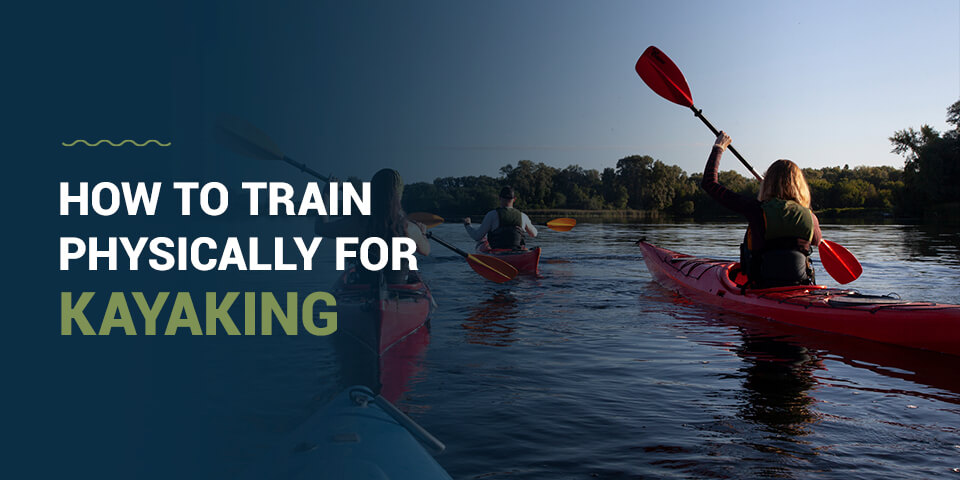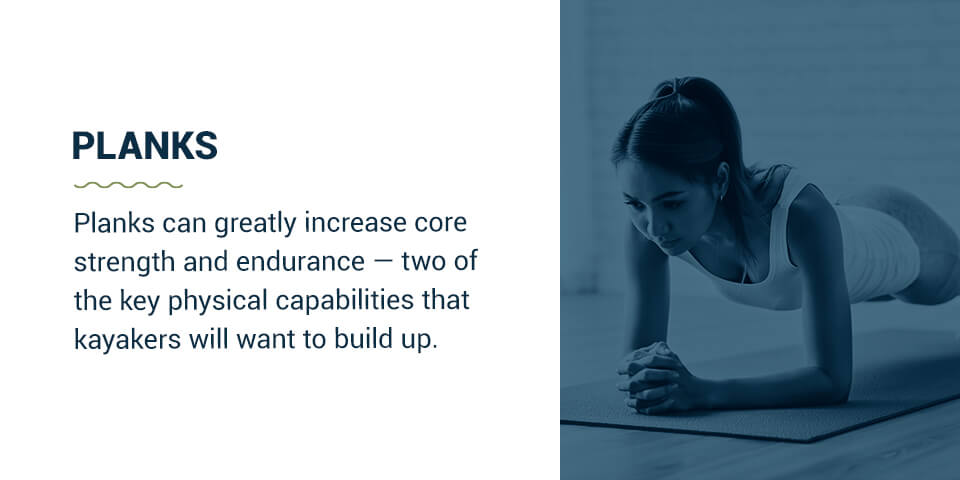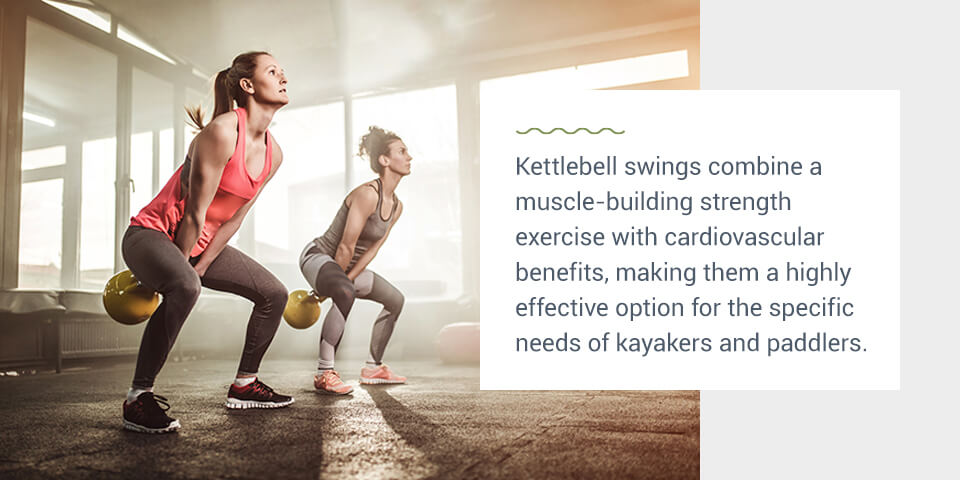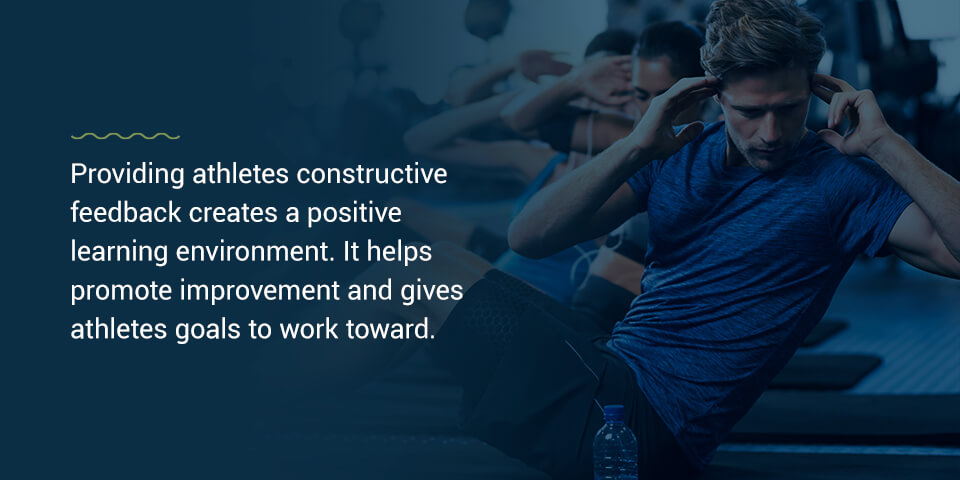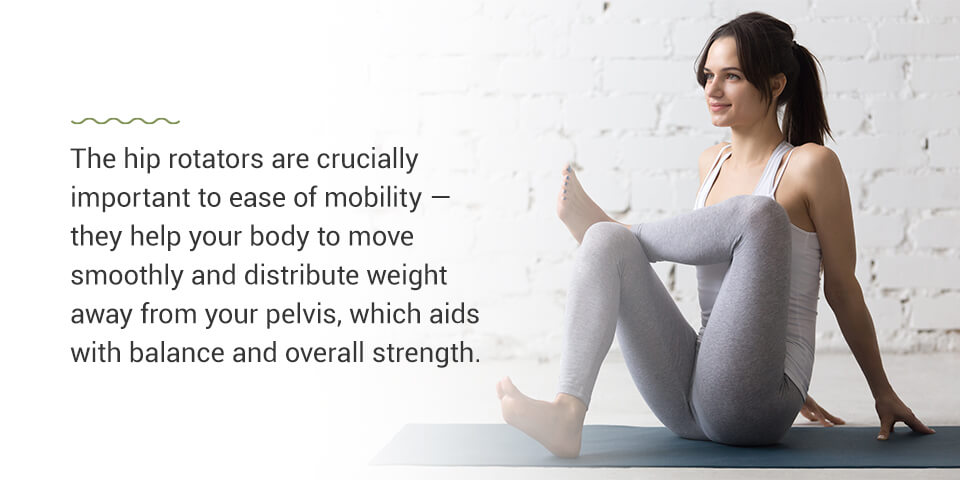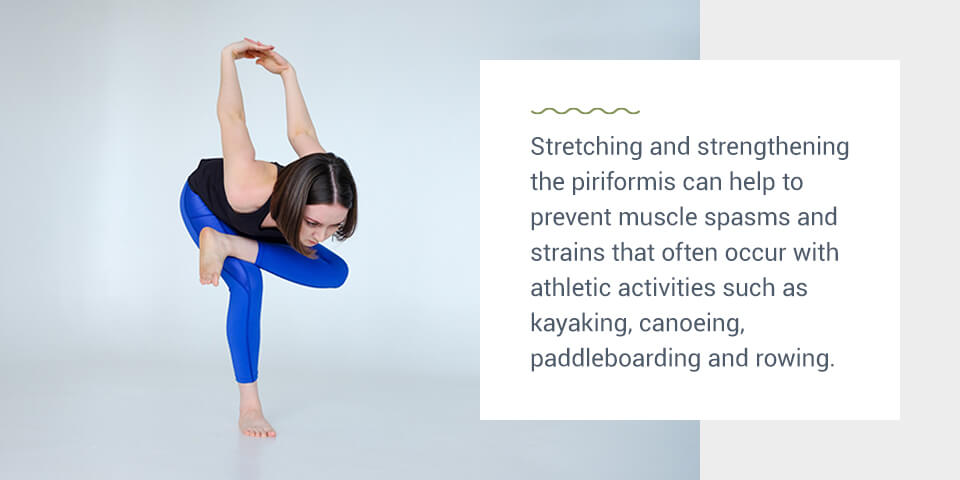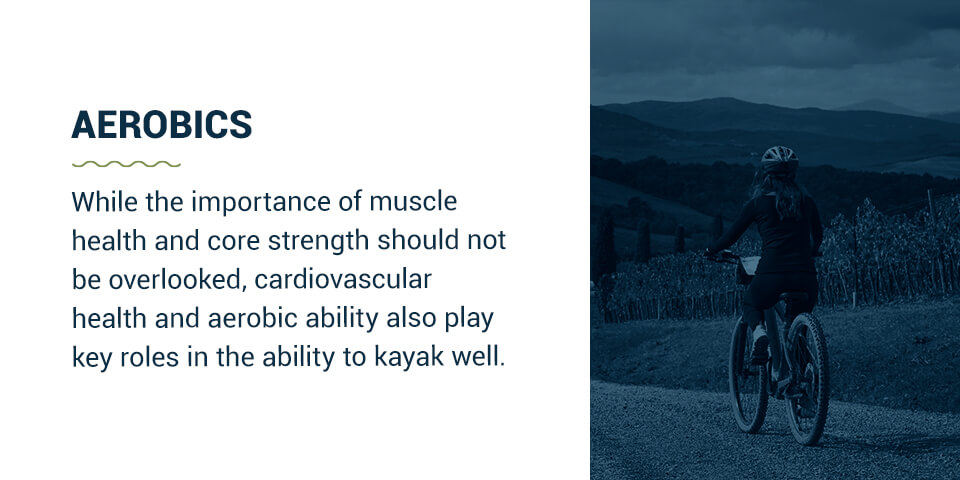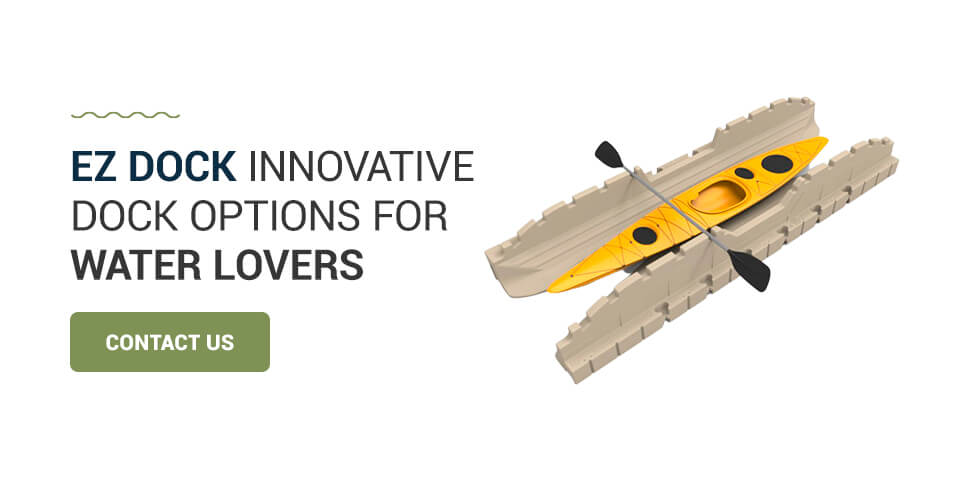Filters
How to Train Physically for Kayaking
Kayaking is a popular hobby that many people can enjoy. This outdoor pastime is relatively simple and doesn’t require extensive skill or equipment. For many, kayaking is the ideal activity. Kayakers are able to connect with nature and enjoy the beauty and character of the outdoors while also engaging in physical exercise. Many people who enjoy other physical activities — such as hiking, running or gym workouts — will already be in great physical shape and may not require additional fitness training in order to kayak. However, since kayaking requires a great deal of upper body strength, some people may benefit from kayak-specific physical training before embarking on a kayaking trip.
Read the full article or jump to a specific section:
- Why Kayakers Should Do Physical Training
- Eight Kayak Training Exercises For Physical Fitness
- Sample Training Schedule for Kayakers
- EZ Dock Innovative Dock Options for Water Lovers
Why Kayakers Should Do Physical Training
Physical training can contribute to the health of kayakers of any and all skill levels. Fitness plans for kayaking can be greatly advantageous, both physically and mentally, for all who take part in this hobby. There are three primary benefits that kayakers can gain from regular, consistent kayaking-specific workouts: building muscle, preventing injuries and increasing cardiovascular performance.
- Building muscle strength. Kayaks are powered almost entirely by the human(s) paddling them. The best, most effective and most powerful paddling techniques require specific types of muscle strength, as well as overall endurance capabilities. Of course, most kayakers will understand that paddling requires substantial muscle strength in the arms, shoulders and chest. However, building solid core strength and a strong back should also be key parts of any effective kayaking fitness plan. Building up muscle strength in all of these areas of the body will likely result in more enjoyable kayaking outings for any paddler.
When kayakers of all skill levels invest in their physical fitness and build muscle, they will be able to paddler for longer distances and with greater power. Physical training for kayaking can be an integral part of getting to the next level of this hobby. Kayakers who invest in their physical fitness will be able to enjoy longer kayaking trips, and can feel confident in their abilities to maneuver trickier waterways and more challenging routes.
- Preventing potential injuries. Building upper-body and core muscle strength and overall physical fitness are key to partaking in long kayak tips and all levels of kayaking outings. However, the benefits of physical training for kayakers are not limited to increased power and strength. Kayaking, without the benefits of fitness training, can sometimes result in injuries. Common kayak-related injuries can include muscle strains and pulls, back pain and hand/wrist pain, among others. Proper fitness training can help kayakers to avoid these injuries in the first place. Fitness training can also help kayakers to build resiliency and thus the ability to bounce back quickly if injuries do occur.
- Increasing cardiovascular performance. As is true with any type of physical activity, kayaking requires significant exertion from the paddler’s heart and lungs. While building up muscle strength and core strength is important for paddling, an effective kayaking fitness plan should not ignore the importance of cardiovascular training as well. A strong cardiovascular system can help the kayaker’s muscles to function more efficiently and effectively. In addition, cardiovascular health can increase a person’s endurance and overall physical capabilities, with both kayaking and all other physical activities.
Eight Kayak Training Exercises For Physical Fitness
The exact training exercises and fitness plan for individual kayakers may vary due to factors such as age, genetics, health history, underlying health conditions and others. Kayakers with concerns should consult a professional fitness trainer or medical professional to develop the best training plan for their body and their needs.
However, for the average person in overall good health, many of the following exercises can form a solid fitness foundation for kayaking and other physical activities. Eight of the best, most effective kayak training exercises include the following:
- Planks. A plank is a fairly well-known exercise that can be performed without any additional equipment aside from the practitioner’s own body weight. Planks are a great, simple and effective exercise that nearly anyone can do, in nearly any location. Planks can greatly increase core strength and endurance — two of the key physical capabilities that kayakers will want to build up.
In order to perform a plank, one should follow these basic steps:
- Lay flat on your stomach, on the ground, on a yoga mat or on another flat, smooth surface.
- With feet about hip-width apart and your ankles straight, curl your toes up and lift your body off the ground. Keep your body in a straight line.
- With your elbows directly underneath your shoulders, straighten your arms all the way up. Continue to maintain a straight line with your body.
- Fully engage your body’s core muscles by squeezing your quads and glutes. Imagine slightly lifting your hips towards the ceiling. This will help to keep your back straight and your core engaged.
- Your head and neck should rest in a neutral position. The body should not sag in any way during the plank exercise.
- Breathe in and out, steady and intentionally, throughout the exercise. Hold the plank for at least twenty seconds to start. Try to build up your endurance gradually by holding the plank for an additional few seconds every day.
- The “open book” exercise. The open book exercise gets its name from the fluid, rotational movement around which it is based. This exercise can be a wonderful addition to any kayaker’s fitness plan, as it can help to build torsional strength and flexibility — two key attributes needed for strong, effective paddling.
The open book exercise can be modified to meet the needs of individual practitioners. However, for a good, basic interpretation of the exercise, follow these steps:
- Lay on your side on a yoga mat or other solid, flat surface. Bend your legs in front of your body, from the knees, at a 90 degree angle.
- Holding this position, extend both of your arms, straight, in front of your body. The top arm should lie flat on the bottom arm, with the palms of both hands touching.
- Slowly rotate your head and torso to look behind you. Slowly lift your top hand and arm back with you as your upper body rotates.
- Rotate as far back as you can, while keeping your knees bent and your hips square. You should feel a good stretch in your shoulder and along your arm. Do not force your arm too far beyond what feels comfortable.
- Rotate your arm, torso and head back to the original position.
- Repeat the steps from the beginning. Try for fifteen reps to start. Then, switch to the other side of your body and do the same amount of reps.
- Kettlebell swings. For those with access to kettlebells, kettlebell swings can be another great exercise for kayakers and their fitness routines. Kettlebell swings combine a muscle-building strength exercise with cardiovascular benefits, making them a highly effective option for the specific needs of kayakers and paddlers.
Kettlebell swings can be done by following these steps:
- First, select a kettlebell at a weight that you can handle for about twenty reps.
- After you select your kettlebell, place it on the ground in front of you. Stand behind the kettlebell with your feet about shoulder-width apart.
- Bend from the hips, slightly bending your knees as well, and grab hold of the kettlebell. Your palms should be facing back toward your body.
- Lift the kettlebell while beginning to straighten your hips and legs. The kettlebell should swing back between your legs.
- As you push your hips forward, swing the kettlebell straight out in front of your body. The kettlebell should not go higher than your chest. Squeeze your glutes and engage your core during this part of the exercise.
- Keep your core engaged as you lower the kettlebell. It should descend back through your legs.
- Repeat steps three through six, doing about fifteen to twenty reps to start. As you get more comfortable with kettlebell swings, you can increase the number of reps and/or the weight of the kettlebell.
- Modified crunches. Modified crunches can be another great addition to a kayaker’s fitness training method. Crunches can be an incredibly effective way to increase core strength and abdominal and oblique muscles. The abdominal and oblique muscles are key to preventing back strains and back pain, both of which often plague kayakers, canoers and other kinds of rowers. The following type of modified crunches can be performed without any additional equipment, making them a great option that can be done in nearly any location.
This type of modified crunch is often called a “crunch and twist,” due to the motion that it entails.
- To begin, lie on your back with both of your knees bent and held close together. Cross your arms, vampire-style, over your chest.
- Raising your head and chest, do a crunch. As you lift your head and chest, rotate your upper body toward your left leg. Keep your head several inches away from your chest in order to maintain a neutral neck position.
- Lower back down to the ground. Lie flat.
- Repeat the crunch, this time rotating toward the right knee.
- Perform about thirty crunches (fifteen in each direction).
- Hip Rotator Stretch. The hip rotators are crucially important to ease of mobility — they help your body to move smoothly and distribute weight away from your pelvis, which aids with balance and overall strength. Because kayaking requires the kayaker to sit for extended periods of time, some people may experience hip, butt and/or lower back stiffness after a day of kayaking. It’s crucial not to focus entirely on the upper body when developing a kayaking fitness regimen. The hip rotator stretch can be done while sitting in a chair, which makes it a great exercise to do while watching television or taking a break at your work desk.
- First, sit up straight in a chair with your behind close to the chair edge.
- With your right leg bent at a right angle, cross your left leg so that your left ankle lies across the top of your right thigh.
- While holding this position, take your left hand and gently but firmly press down on your left leg.
- Once you feel resistance, hold your legs in this position. Slowly lean forward from your hips, while keeping your chest forward and your spine straight. Hold this position for about thirty seconds.
- Then, repeat the entire process on the opposite side.
- Hip flexor stretches. Hip flexor stretches can be one of the most important exercises that you can incorporate into a kayaking-focused fitness plan. This stretch can increase both joint flexibility and muscle strength. As such, it can be much more impactful than a simple flexibility stretch alone. To perform the hip flexor stretch, follow these steps:
- Begin by kneeling on one leg with your other leg bent at a 90 degree angle. Keep the leg that you are kneeling on lined up with your hips and shoulders. Your other knee should remain in line with the ankle/heel of the front foot.
- Place your hands on your front knee and apply gentle pressure. This will engage your core muscles.
- Tuck your hips and tailbone underneath your body.
- Tightly squeeze your glutes and abs to protect your spine throughout the exercise.
- Lunge forward slightly until you feel it in your hips. Hold this position for about two minutes.
- Then, press your back foot into the ground as your knee tries to push forward. Hold this for about thirty seconds.
- Relax back into the original position and hold for another thirty seconds.
- Switch legs and repeat the entire process on the other side of your body.
- Standing Piriformis Stretch. The piriformis is a flat muscle located in the buttocks. It plays an important role in overall movement and mobility, along with the glutes and hamstrings. Stretching and strengthening the piriformis can help to prevent muscle spasms and strains that often occur with athletic activities such as kayaking, canoeing, paddleboarding and rowing. The standing piriformis stretch is simple and easy for the average person to perform, as it does not require any additional equipment aside from the person’s body.
The standing piriformis stretch can be modified to meet the needs of different individuals. The following steps are a great starting point for this type of stretch:
- Stand with your back flat against a wall. From this position, walk both of your feet forward, about two feet away from the wall.
- Next, lower your hips to a forty-five degree angle to the floor.
- While holding this position, lift your right foot up and place your right ankle so that it rests on your left knee. You should feel the stretch in your buttocks.
- Hold this position for at least thirty seconds. Then, return to the starting position and repeat the process on the other side.
- Aerobics. While the importance of muscle health and core strength should not be overlooked, cardiovascular health and aerobic ability also play key roles in the ability to kayak well. Some of the most common aerobic activities include running (outside or on a treadmill), biking, walking on an elliptical machine, pilates classes, dance classes and many other group exercise activities. Aerobics should not be overlooked as part of a kayak-based fitness routine. Consult a professional trainer or other medical professional to develop a routine that is tailored to your specific needs and health history.
Sample Training Schedule for Kayakers
There are so many factors to consider when putting together a fitness regimen, whether it be based on kayaking, canoeing, rowing or any other physical activity or hobby. Some factors that may impact your fitness training regimen include age, genetics, health history, underlying health conditions and others. As always, it’s best to build a fitness plan with the guidance of a skilled, experienced physical trainer or medical professional.
Keep in mind your goals for your fitness training plan. As a kayaker, you will want to make sure that you are building muscle, increasing your core strength, building up your endurance, improving your balance, working on your cardio and more.
Essentially, kayaking is a great form of exercise that can engage every part of your body! It’s important to build a comprehensive physical workout that will address the needs of any kayaker. The following tips can work as a good framework or guideline for anyone preparing for a kayak trip or anyone looking to increase their kayaking abilities in general.
- Begin your training plan about six to eight weeks before your planned kayaking trip. If you are kayaking regularly, you can simply incorporate your training plan into your schedule at any time.
- In order to get the most out of your fitness training plan, it’s a good idea to spread out different activities over different days. For example, you can break down the seven days of the week like so:
- Three nonconsecutive days of strength training. This included muscle-building and core-strengthening exercises.
- Two nonconsecutive days of cardio training. Cardio training can include some types of strength training (such as kettlebell swings). More commonly, cardio includes high-intensity workouts like pilates or dance classes, running, biking and others.
- Two nonconsecutive rest days. While it may seem counterintuitive, resting is highly important to the overall health of your body. Rest days help your body to recover between workouts, and is crucial to ensuring your muscles heal in between exercising, and thus makes them less prone to potential injuries and tears.
- Don’t forget to warm up! Warm-ups are often overlooked, yet are one of the most critically important parts of any type of physical fitness workout. While a good, effective warm-up will be different for everyone, there are a few rules of thumb to follow.
- Begin your warm-up about ten to fifteen minutes before you begin your workout in earnest. A warm-up can be a brisk walk, some stretching or light work on gym equipment.
- Inhale and exhale slowly and intentionally throughout your warm-up. Breathing exercises can be grounding and can help you to stay connected to your body.
EZ Dock Innovative Dock Options for Water Lovers
With over thirty years of experience, EZ Dock is a proven industry leader in the creation of innovative, creative docks. EZ Dock’s floating docks offer customizable solutions, environmental safety, ADA accessibility and many other highly valuable features. Their product line includes opinions specific for wetlands, kayakers, PWC owners and many more applications. All EZ Dock products are eco-friendly and made to last. You can feel confident in investing in their products.
Kayakers in particular may be interested in the EZ Launch and the EZ Launch for Kayaks. Both of these solutions offer flexible, affordable and high-quality dock options for kayakers, canoers and all types of rowers. Thanks to EZ Dock’s unique, creative floating dock design, these flexible, easy-to-use launches make getting into your kayak or canoe safe, quick and simple. Request a quote for the EZ Launch Residential today, and take your kayaking and canoeing to the next level!
Contact EZ Dock now to learn more about their comprehensive offerings and cutting-edge solutions for your docking needs. Their world-class customer service team is ready to assist you and answer any questions you may have. EZ Dock’s unmatched service, innovation and product offerings make them the only dock distributor you will every need!

